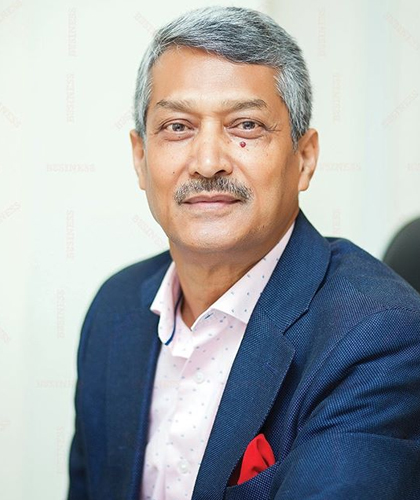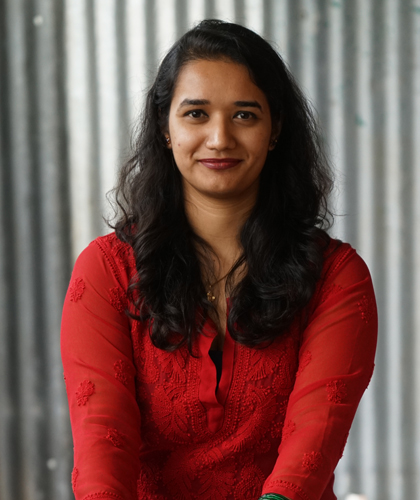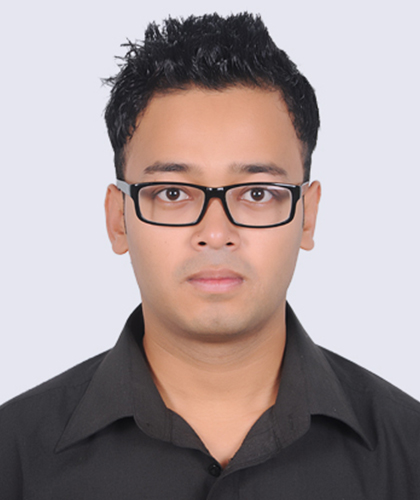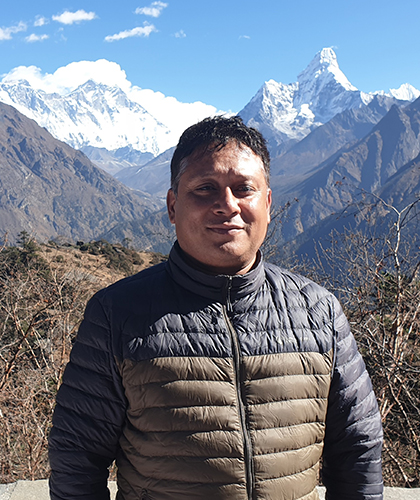Kathmandu Langtang Tour
Trip
Overview
Trip
Highlights
-
Drive from Kathmandu to Syabru Besi.You can catch a glimpse of Ganesh Himal, green terraces and hills while passing along the road at the bank of Trishuli River.
-
Traverse the ridge on Syabru Besi's main road and reach suspension bridge over the Bhote Koshi, just north of the junction with the Langtang Khola.
-
Enjoy the panoramic view of Dorje Larpa (6990m.), Langtang Ri (6370m.), Langtang Lirung (7245m.) and so on.
-
Dinner at local restaurant with cultural dance show.
-
Country
Nepal -
Duration
9 Days -
Difficulty Level

-
Accommodation
Overnight at the Hotel -
Guide
English Speaking Nepali Tour Leader
Route
Itinerary
Welcome to Nepal!
On arrival at Tribhuvan International Airport, a representative from our office will greet you at the airport and escort you to your hotel and help you check in. You will then be briefed about your daily activities. You'll have rest of the day at leisure.
Optional: Mountain Flight
One of the must-see landmarks of Nepal is, of course, the highest peak in the world – Mount Everest. An awe-stricken silence comes close to matching the experience of a mountain flight. For one hour, you'll fly over the Eastern Himalayan Ranges of Nepal where some of the highest peaks in the world including Mt. Everest lie for a surreal feeling as you come face to face with the world's tallest and most enigmatic of Mountains. Even those visitors who like the rigors of a trek won't miss the opportunity to "conquer" the mountains in one stunning swoop.
Breakfast at the hotel.
Kathmandu City: Kasthamandap, the source of the name Kathmandu means 'made from the timber of a single tree'. Also known as Kantipur, the capital Kathmandu is the hub of Nepal's art and culture. It is a place for rest, relaxation and easy-day sightseeing of historic and artistic temples and monuments. Kathmandu Durbar Square with its arrays of temples, Seto Machhindranath and the ancient palace of the former Nepali Royals enriches your experience of the centuries old civilisation.
Swayambhunath Stupa: Said to be around 2000 years old, this Buddhist Stupa sits atop a hill. The main stupa is composed of a solid hemisphere of brick and earth supporting a lofty conical spire crowned by a pinnacle of Copper gilt. Painted on the four sided base of the spire are the all seeing eyes of Lord Buddha. The hill of Swayambhu is a mosaic of small Chaityas and Pagoda temples. You'll get a scenic view of Kathmandu city from there.
Patan City: Located about 5 km south of Kathmandu, Patan is one of 3 royal cities in the valley. A destination for connoisseurs of fine arts, Patan is filled with wood and stone carvings, metal statues, ornate architecture, including dozens of Buddhist and Hindu temples, and over 1200 monuments.
Patan is believed to have been built in the third century B.C. by the Kirat dynasty later expanded and enriched by the Lichhavi and the Malla rulers in the medieval period. Patan Durbar Square, like its counterpart in Kathmandu, is an enchanting mélange of palace buildings, artistic courtyards and graceful pagoda temples. The former Royal palace complex is the centre of Patan's religious and social life, and houses a beautiful museum. One remarkable monument here is 16th century temples dedicated to the Hindu go Krishna, built entirely of stone.
Drive from Kathmandu to Syabru Besi will take about nine hours. You head north out of Kathmandu driving through scenic foothills and ridgeline vistas to Syabru Besi passing through Dhunche. You can catch a glimpse of Ganesh Himal, green terraces and hills while passing along the road at the bank of Trishuli River. As you pass through Dhunche you feel as if you are heading towards deep land.
Overnight at Local Lodge.After breakfast we traverse the ridge on Syabru Besi's main road and reach suspension bridge over the Bhote Koshi, just north of the junction with the Langtang Khola. Terrraced fields and dense forest with a variety of plant species like oaks, maple, alder and bamboo open up. We may get to see yellow-throated martin, wild boar, langur monkey, and Himalayan black bear en route. Further on, the trail crosses a stream and a bridge. As we continue ascending steeply along the trail, we come across a steel suspension bridge at 2000 meters over the Langrang Khola. The route furthers to the north bank of the Langtang River amid the spectacular vistas of cascading waterfalls and opens into scrub oak forest. On reaching 2480 meters, we arrive at Changtang where we conclude the trek for the day.
Overnight at Local Lodge.After breakfast trek from Lama Hotel to Langtang village via Ghore Tabela takes about six hours. As you continue climbing, occasional glimpses of Langtang Lirung between the trees can be seen.
At Ghora Tabela [3000m], the trail emerges from the forest. While walking, you can catch a glimpse of white monkeys and local birds. The trail continues to climb gently and the valley widens, passing a few temporary settlements used by herders who bring their livestock to graze in the high pastures during the summer months. There is a monastery we can visit before arriving at the village of Langtang, the headquarters of the Langtang National Park. The houses of Langtang and its neighbouring villages are flat-roofed-Tibetan style, surrounded by stone walls enclosing fields of buckwheat, potatoes, wheat, turnips and barley.
Overnight at Local Lodge.After breakfast a trek from Langtang Village to Kyangjin (3870m.) takes about three hours. The trail climbs gradually through small villages and yak pastures as the valley opens out further and the views become more extensive.
After crossing several small streams and moraines, the trail reaches the settlement at Kyangjin by lunchtime allowing time to acclimatise and explore the area. There is a small monastery and a government-operated cheese factory. At this point, you can enjoy the panoramic view of Dorje Larpa (6990m.), Langtang Ri (6370m.), Langtang Lirung (7245m.) and so on.
Stay overnight at lodge.After an early breakfast you'll take a scheduled flight back to Kathmandu and this flight surely will be one of the highlights of your tour, with amazing views of the surrounding mountains. On arrival in Kathmandu you'll be transferred to Hotel.
Leisure all day
Overnight at hotel.On arrival in Kathmandu you'll be transferred to Hotel.
Leisure all day. Day concludes with a Farewell dinner at local restaurant with cultural dance show.
Overnight at hotel.We ensure that that you will leave Kathmandu with cherishing memory and an experience of a lifetime. Our representative will drive you to the airport in time for your flight back home. Journey well!
Meet
Our Experts
For Travel Agents

MR. BIJAY AMATYA
-
CEO, Founder
For Travellers

Ms. Neha AMATYA
-
Executive - Business Development

Mr. Deepak Gurau
-
Tour Officer

Mr. Sanjaya Moktan
-
Senior Manager tours

Mr. Saroj Bhatta
-
Tour Officer
Contact us
Base Camp, Basundhara, Kathmandu, Nepal
This email address is being protected from spambots. You need JavaScript enabled to view it.




 +977 1 5909976 / 77 / 78
+977 1 5909976 / 77 / 78